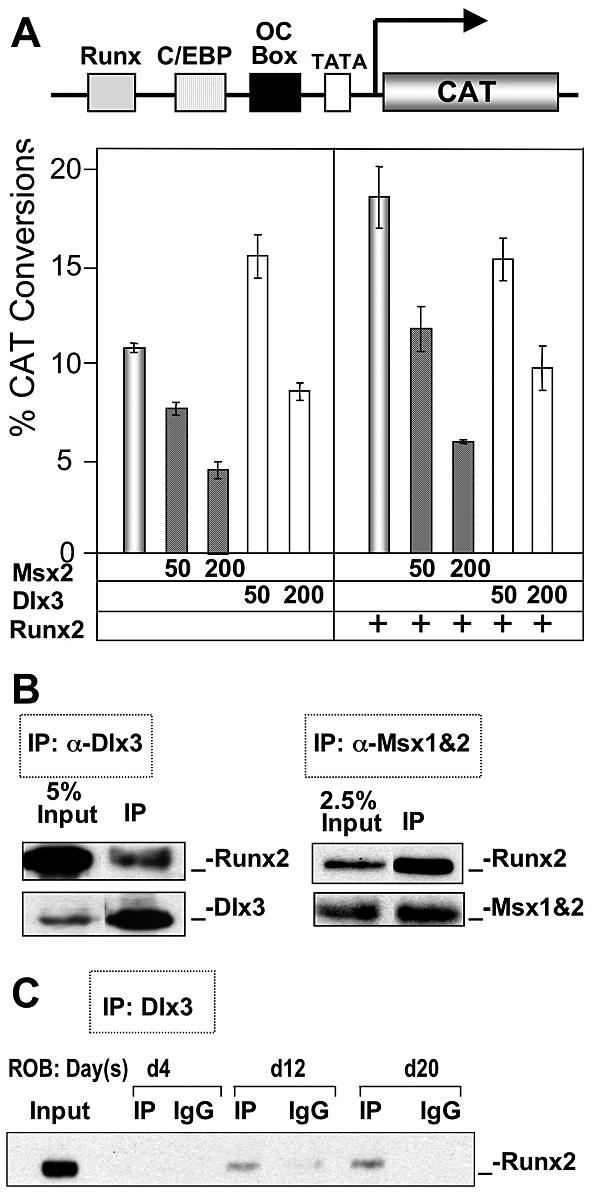FIG. 6.

Dlx3 both activates and represses OC promoter activity through protein-DNA and protein-protein interactions, respectively. (A) The mouse preosteoblast cell line MC3T3-E1 was cotransfected with either empty vector or two concentrations of Msx2 or Dlx3 (50 and 200 ng/well on six-well plates) and the proximal OC promoter (−208 OC-CAT) using Fugene 6 (Roche Molecular Biologicals). Promoter activity was normalized with cotransfection with Renilla luciferase. The effects of Msx2 and Dlx3 at low dose (50 ng) and high dose (200 ng) on basal OC promoter activity (left) were compared to Runx2-induced conditions (right). (B) The protein-protein interaction between Runx2 and Dlx3 or Msx2 was demonstrated in coimmunoprecipitation studies. ROS 17/2.8 cells were cotransfected with Msx2 or Dlx3 and Runx2. Msx2 (4G1) and Dlx3 (10) antibodies were used to pull down the immunocomplexes. Runx2 mouse monoclonal antibody was then used for Western blotting to confirm the presence of Runx2 in the complex. (C) Endogenous nuclear proteins from the indicated stages of ROB differentiation were immunoprecipitated using Dlx3 antibody, and the presence of Runx2 in the precipitate was detected by Western blotting. The increase in the Dlx3-Runx2 complex was consistent with increased Runx2 cellular levels (Fig. 2). The coimmunoprecipitation assays included normal immunoglobulins (IgG) from either rabbit (Dlx3) or mouse (Runx2) which were used as controls. Input represents 10% of the sample of day 20 nuclear extracts.
